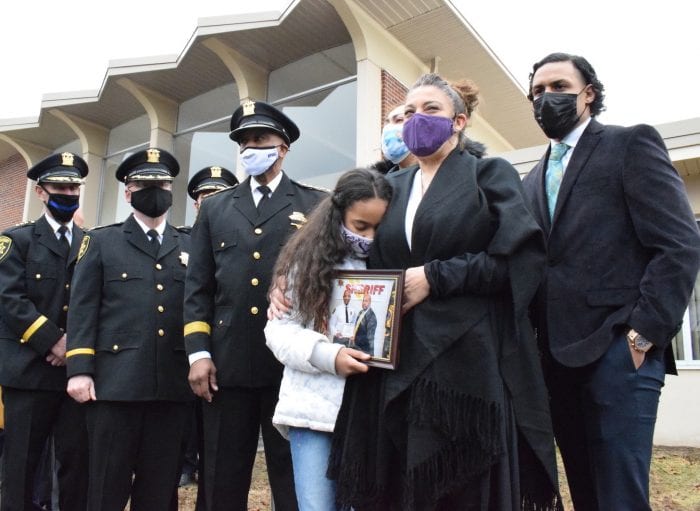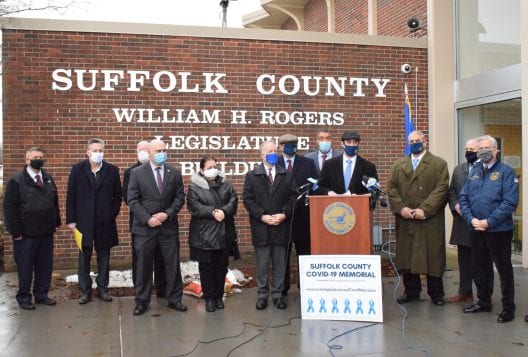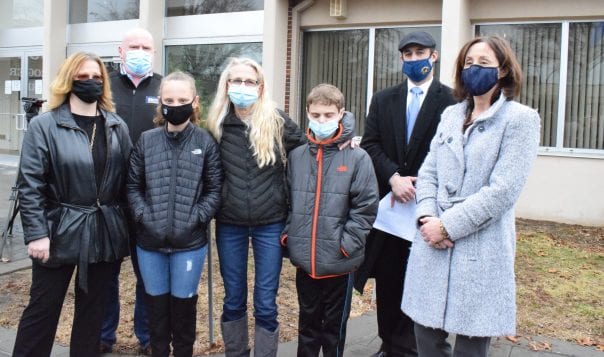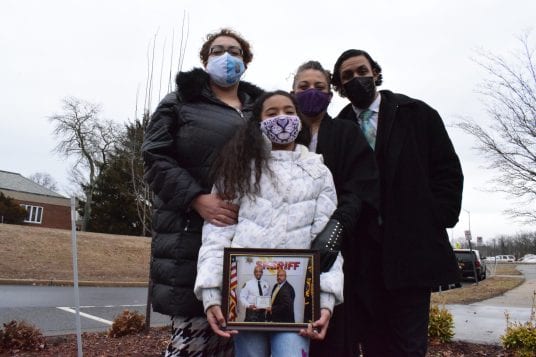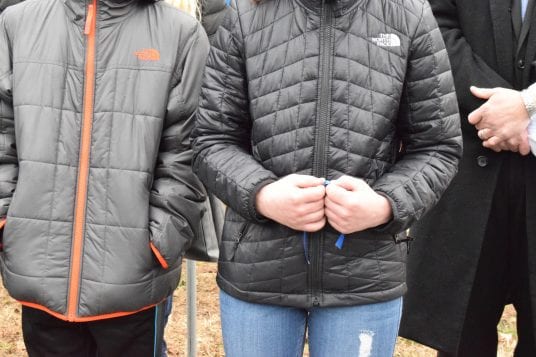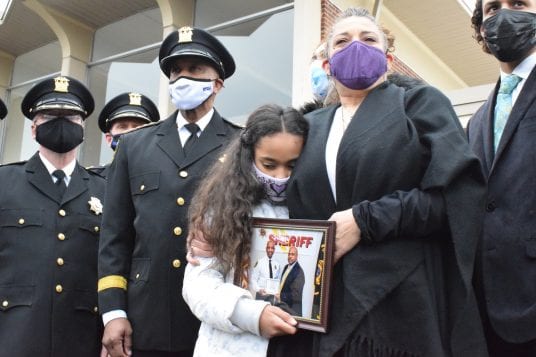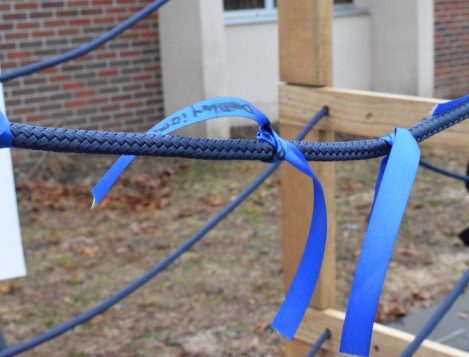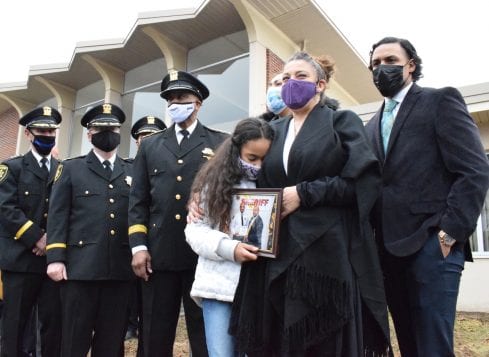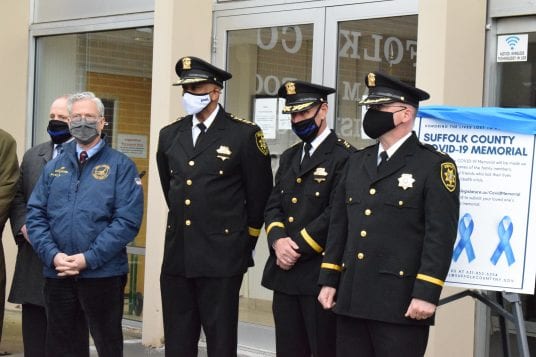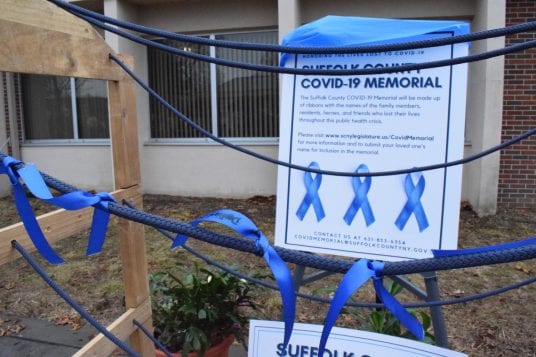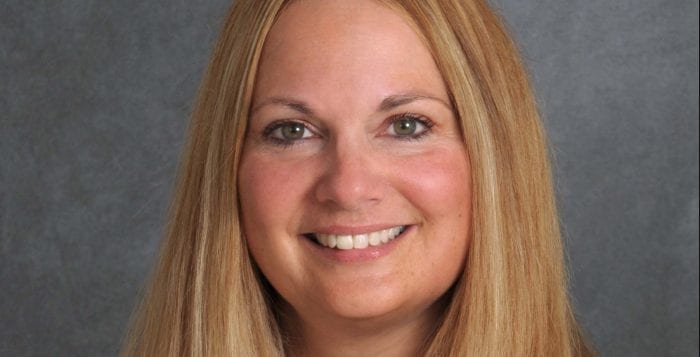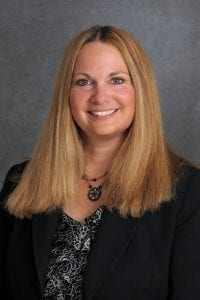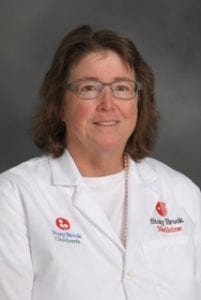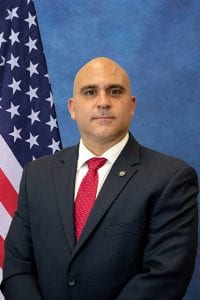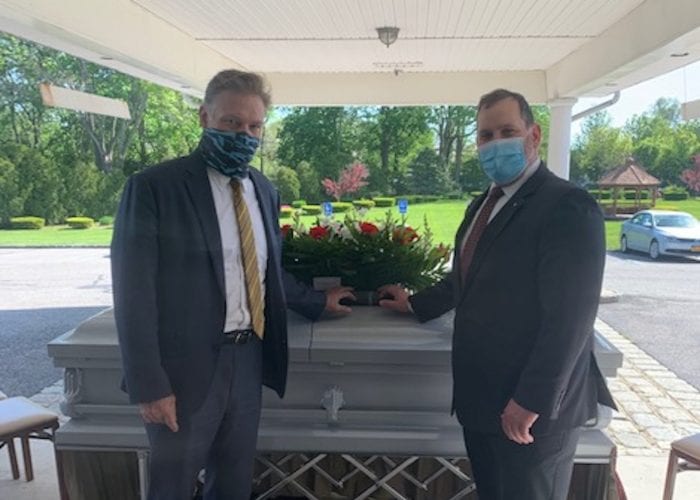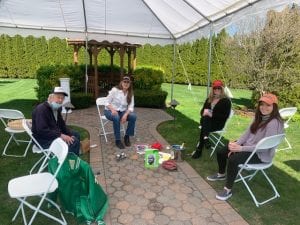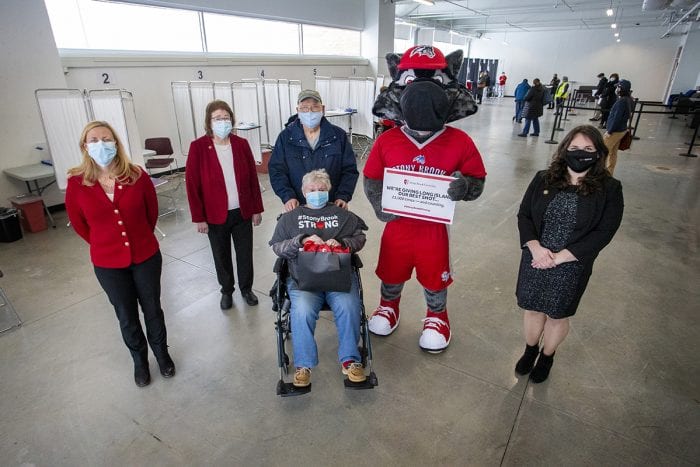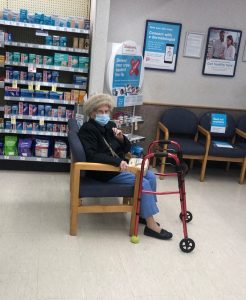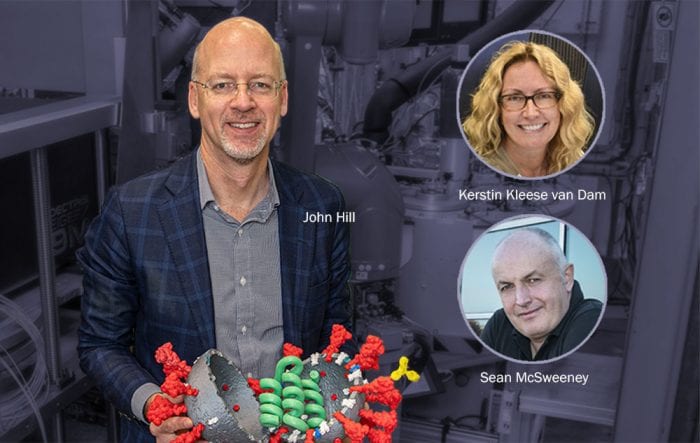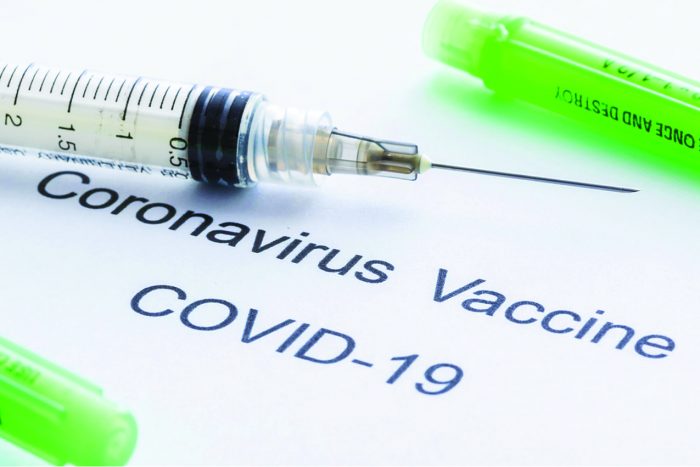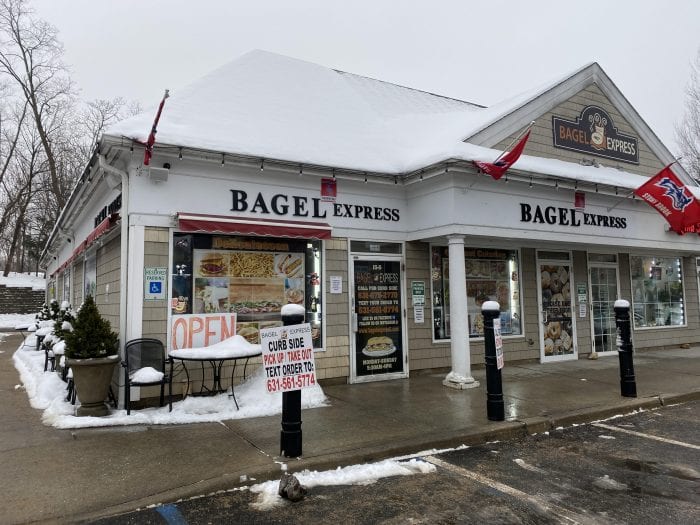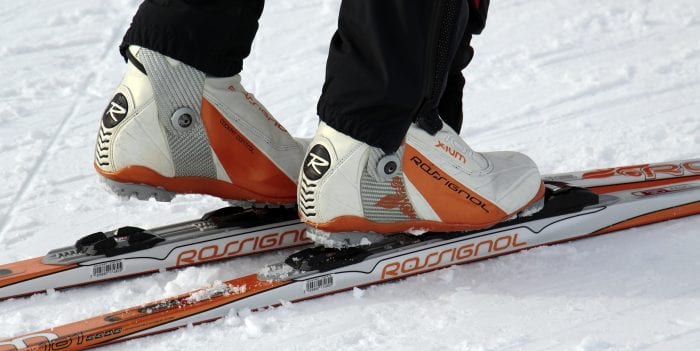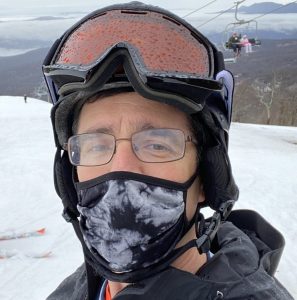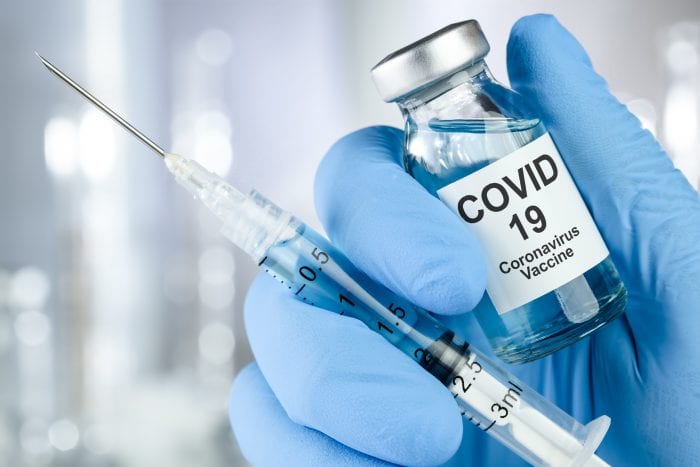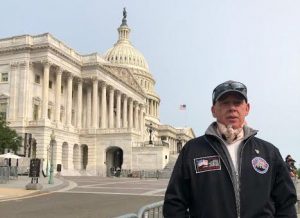Almost a year to the day of the first reported case of COVID-19 in Suffolk County, elected officials joined mourning families to remember the lives lost.
On Monday, March 1, Suffolk County Presiding Officer Rob Calarco (D-Patchogue) with his colleagues and officials unveiled a new county COVID-19 memorial in Hauppauge.
“Over this last year, I don’t think anybody at the beginning would have thought that we would have had so many trials and tribulations, so many challenges and so many losses,” Calarco said.
Since March 2020, there have been more than 500,000 deaths nationwide from the virus, and just over 3,000 in Suffolk County.
“That is a tremendous number of people,” Calarco added. “And it has left many of us mourning.”
The wooden structure, located outside the Legislature’s William H. Rogers Building at 725 Veterans Memorial Highway, was built and donated by Smithtown Boy Scout Troop 888, and will be on display throughout the month of March.
Families and loved ones are encouraged to write the names of those who have passed, tying the purple ribbons on the metal cords across the wooden planks. It’s a way, Calarco said, to memorialize them.
“Because especially for those who were lost early on, family members weren’t able to lean on each other,” he said. “They weren’t able to be with their loved ones in the hospital due to restrictions. They weren’t able to have the normal funeral and wake process for their friends and family. When we grieve, we need to have the community around us to support us.”
Deputy County Executive Jon Kaiman spoke on behalf of County Executive Steve Bellone (D) who was not in attendance.
“Three thousand people in this county lost their lives … that’s more than 3,000 families grieving,” he said. “We in Suffolk County stand with them. We grieve with them. We know that we’re in the process of getting through it, we’re getting through it together.”
The first group of families able to share names tearfully thanked the county for honoring their loved ones.
The family of Sgt. Keith Allison of Brentwood was the first to tie the ribbon. Allison, who spent 25 years in uniform with the Suffolk County Sheriff’s Office, died in December after a 17-day battle with the coronavirus.
“I’m humbled to be here and to accept this ribbon in his name,” said his wife Brenda. “I know that he’s looking down smiling.”
County Sheriff Errol Toulon Jr. (D) said of his former colleague that he was “not only just a friend of mine, but a person who was always smiling, always helpful and always energetic and passionate about his job.”
County Police Commissioner Geraldine Hart came to support the Van Zeyl family. Lt. Robert Van Zeyl, of Selden, passed away from the virus on Jan. 20 after a two-week battle. He was the first active county police officer to succumb to COVID-19.
“I think we all thought that we would be immune from this tragedy, and it really hit our family very hard, our police family,” Hart said. “Bob was out there every day. He didn’t stop. He didn’t back down during the most difficult of times in this pandemic. So, we were honored to have him in our family, and we will always be honored to have you with us. And we’ll never forget what he’s done for us.”
Van Zeyl’s ex-wife, Tina, joined their two children Hailey and Tyler in the emotional ribbon tying. Hailey had the honor of putting her dad’s name on the memorial.
“It felt like I was honoring my dad,” she said. “I know he’s proud of me.” Anyone who has lost someone to COVID-19 may submit their loved one’s name for inclusion in the memorial online at scnylegislature.us/covid-19-memorial. The website also provides the option to share a photo and a memory about the person.
After the county receives the submission, county staff will write the loved one’s name on a ribbon and affix it to the memorial.
Ribbons will also be made available to those who wish to write their loved one’s name and tie the ribbon themselves, at both the memorial in Hauppauge as well as a temporary structure on the East End in the lobby of the Evans K. Griffing Building at 300 Center Drive in Riverhead. Any ribbons tied in Riverhead will be incorporated into the memorial.
More information is available at the above website.

